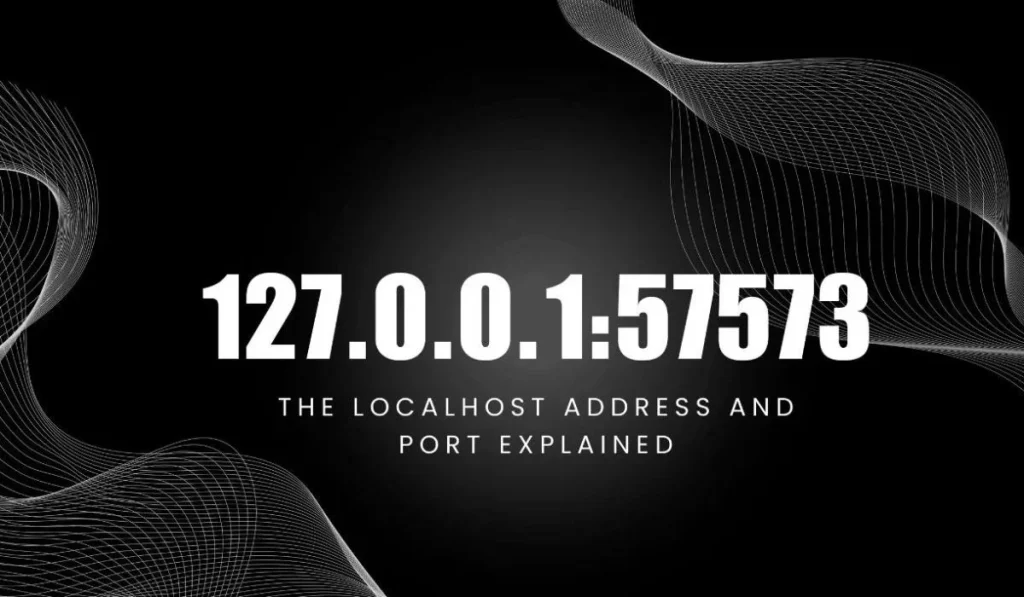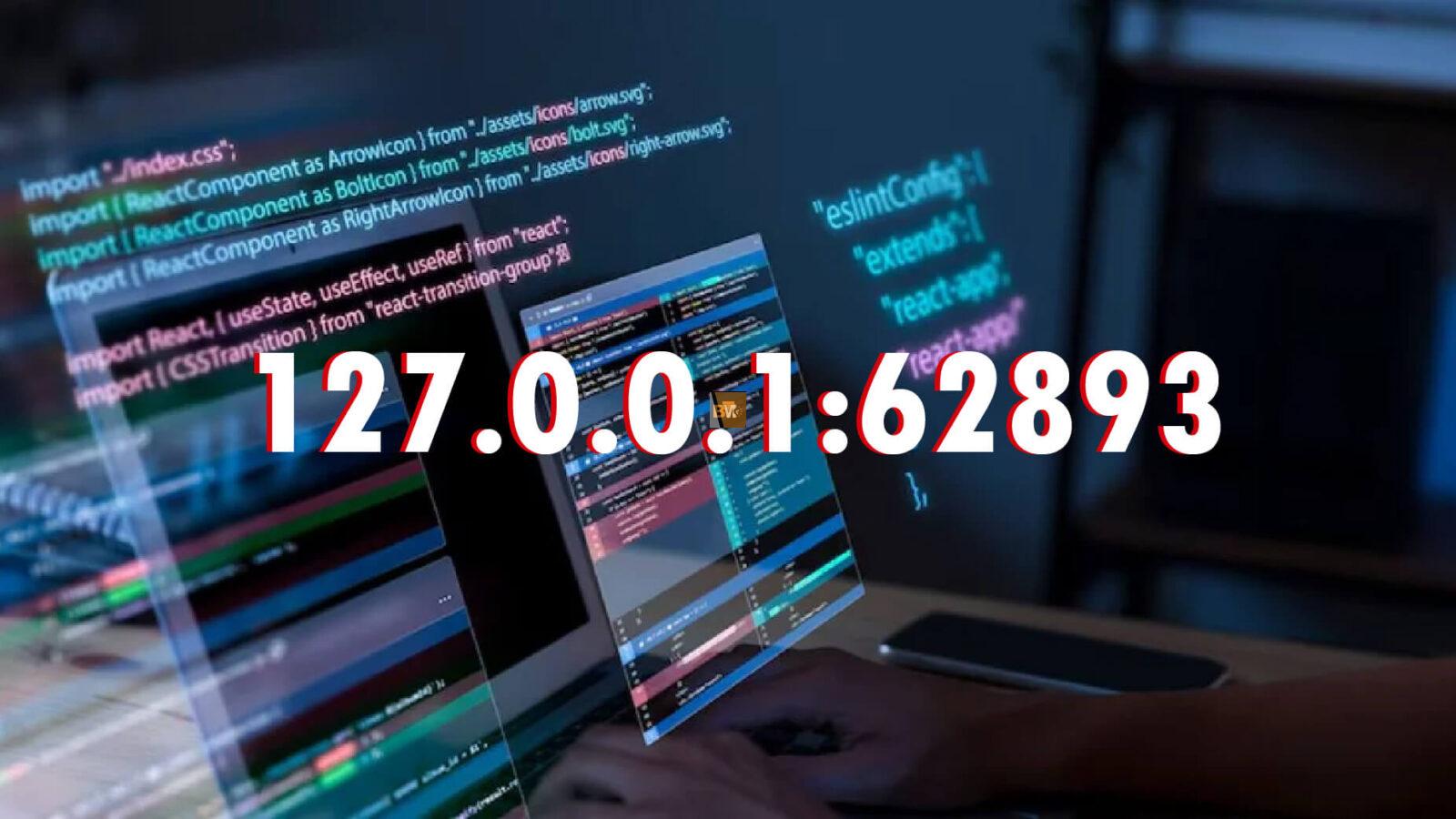Are You Curious To Know About 127.0.0.1:57573? Encountering the error message “Unable to connect to host 127.0.0.1 on port 57573” can be a frustrating experience for developers and IT professionals. This issue often arises due to various compatibility problems, misconfigurations, or conflicts within the local server environment.
Understanding the underlying causes of this error is crucial for effective troubleshooting and ensuring that your applications run smoothly during the development phase. Common culprits include services not running, port conflicts, and firewall restrictions, which can obstruct connections to your local host.
Table of Contents
What Is 127.0.0.1:57573?

127.0.0.1:57573 is a loopback IP address combined with a specific port number used in local development environments. The IP address 127.0.0.1, known as localhost, allows your computer to communicate with itself. This setup is essential for testing and development. The port number 57573 identifies a specific process or service on your machine, enabling targeted communication.
Combined, 127.0.0.1:57573 facilitates running and testing services locally without external network exposure. This isolated environment ensures that web applications and APIs are thoroughly vetted before deployment. Developers often use it to debug and troubleshoot efficiently, ensuring their code functions correctly. The combination benefits web development, API testing, and local server management.
Understanding Localhost and Loopback IP Address
Localhost is a term used in networking to refer to the loopback IP address 127.0.0.1. This address allows your computer to send and receive data to itself. Essentially, it creates a virtual network interface. This is invaluable for developers who must test web applications in a secure and controlled environment.
Localhost simulates a real network without requiring an actual external connection. The loopback mechanism ensures that any data sent to 127.0.0.1 is routed to the same machine. It’s like talking to yourself but in a productive way! Using the loopback IP, transitioning between different services and applications is smoother and more secure. It eliminates potential external threats and network issues during development and testing.
Importance of Port Numbers in Localhost Connections
Port numbers are crucial in local-host connections because they designate specific processes and services. For instance, while 127.0.0.1 is the standard loopback address, port 57573 determines which service to connect to. This distinction helps in managing multiple services simultaneously on a single machine. Imagine running a web server on port 8080 and a database on port 3306; these services would conflict without port numbers.
Additionally, using unique ports allows for isolated testing environments, enhancing security. Port numbers also aid in troubleshooting. When you encounter errors like “Unable to connect to host 127.0.0.1 on port 57573,” knowing the port helps pinpoint the issue. Transitioning between ports lets developers run various applications without interference, ensuring efficient debugging and smoother development processes.
Common Reasons for 127.0.0.1:57573 Errors

- Service Not Running:
A common cause of connection issues is that the target service on port 57573 is not running. This can occur if the service hasn’t started or crashed unexpectedly. - Port Conflicts:
Sometimes, another application might already use port 57573, leading to conflicts. This is common when multiple services run on the same machine without proper port management. - Firewall/Antivirus Blocking:
Security software like firewalls and antivirus programs can block connections to specific ports, including 57573. This happens if the software deems the connection untrustworthy or suspicious. - Incorrect Port Number:
Entering the wrong port number when configuring your application can cause connection failures. Always verify that you use the correct port number to avoid such issues. - Insufficient Permissions:
Lack of proper permissions can hinder the server’s ability to bind to port 57573 or access required resources. Ensure your application has the necessary permissions to function correctly.
Troubleshooting Steps to Resolve Connection Issues
- Verify Security and Firewall Configurations:
Open Port 57573 in your firewall settings and temporarily turn off your antivirus software to prevent security software interference.
- Check Application Configuration:
Use tools like Netstat to confirm port 57573 is not being used by another service. Ensure your application is correctly configured to use this port.
- Review System Resources:
Monitor system performance using Task Manager or Resource Monitor to identify potential bottlenecks. Upgrade hardware if necessary to improve performance.
- Examine Network Configuration:
Configure proxy settings to ensure they don’t block the connection to localhost. Reset the network stack if needed to resolve underlying issues.
- Local Web Application Testing:
Host and run web applications locally on 127.0.0.1:57573 to comprehensively test front-end and back-end functionalities in an isolated environment.
Mistakes to Avoid When Connecting to 127.0.0.1 via Different Ports
- Using Incorrect Port Numbers:
Always double-check the port number you are using. Connecting to an incorrect port can result in connection failures, causing unnecessary troubleshooting efforts.
- Overlooking Firewall Configurations:
Ignoring firewall settings can lead to blocked connections. Ensure that your firewall permits traffic through the specific port you are attempting to use.
- Neglecting Service Status:
Forgetting to verify if the service is running on the specified port can lead to failed connections. Always check that the intended service is active and operational.
- Port Conflicts with Other Applications:
Running multiple services on the same port with proper configuration can prevent conflicts. Ensure that each service has a unique port number to avoid clashes.
- Ignoring Permissions Issues:
Insufficient permissions can control access to necessary resources, leading to connection problems. Make sure your application has the appropriate permissions to use the designated port.
Real-World Examples and Case Studies

- Web Development Environment Problems:
Developers often face errors on 127.0.0.1:57573 due to misconfigured server settings or port conflicts when creating a local web server. These issues can hinder efficient testing and development.
- Database Connection Challenges:
Applications may fail to connect to a database configured on port 57573 due to incorrect credentials or firewall rules blocking the port. This scenario is common in local development environments.
- Docker Container Issues:
When setting up services in a Docker container, improper configuration or port conflicts can lead to errors on 127.0.0.1:57573. Ensuring correct settings is essential for smooth container operations.
- API Endpoint Testing Failures:
Developers might encounter errors while testing API endpoints locally if the API server is not running or is improperly set up. This disrupts the validation of API functionality.
- Firewall and Security Software Interference:
Security software, such as firewalls, may block connections to port 57573, leading to local application access issues. Adjusting security settings can resolve these connectivity problems.
Benefits of Using 127.0.0.1:57573 in Local Development
- Isolated Testing Environment:
Using 127.0.0.1:57573 allows developers to create an isolated testing environment, ensuring that web applications and APIs can be thoroughly vetted without external network interference.
- Enhanced Security:
Running services on 127.0.0.1:57573 keeps them secure from external threats. This loopback address and specific port ensure that data does not leave the local machine, enhancing security during development.
- Efficient Debugging and Troubleshooting:
This setup facilitates efficient debugging and troubleshooting by allowing developers to identify and resolve issues in a controlled environment quickly. The specific port helps pinpoint problems without affecting other services.
- Simulate Real-World Conditions:
Developers can use 127.0.0.1:57573 to simulate real-world network conditions, including testing firewall configurations and security protocols. This helps ensure the application will function correctly in a live environment.
- Concurrent Service Management:
The unique port number enables the simultaneous running of multiple services on different ports. This is especially useful for supporting microservices architecture and ensures no service conflicts.
Best Practices for Local Development and Testing
- Use Unique Port Numbers:
Assign unique port numbers for different services to avoid conflicts. Ensure each service has a dedicated port, like 127.0.0.1:57573, for API testing to streamline the development process.
- Regularly Check Service Status:
Periodically verify that all necessary services are running. Utilize monitoring tools to track the status of services on specific ports to prevent unexpected downtime.
- Configure Security Settings:
Set up firewall and antivirus settings to allow traffic through required ports. Temporarily turn off these security measures during troubleshooting to identify any blocking issues.
- Validate Permissions:
Ensure your applications have the necessary permissions to access needed resources and bind to specified ports. Proper permissions prevent access issues during development.
- Utilize Virtual Environments:
Run services within virtual machines or containers to isolate development environments. This approach mitigates the risk of conflicts and ensures consistent configurations across different setups.
Comparing 127.0.0.1:57573 to Other Localhost Addresses

- 127.0.0.1 vs 0.0.0.0:
While 127.0.0.1 is used for local loopback, 0.0.0.0 listens on all available network interfaces. This means that services bound to 0.0.0.0 can be accessed externally, unlike 127.0.0.1, which is restricted to the local machine.
- 127.0.0.1 vs ::1:
The address 127.0.0.1 is the IPv4 equivalent for localhost, whereas ::1 serves the same purpose in IPv6. Developers often use :1 to test IPv6 compatibility alongside their IPv4 setups.
- 127.0.0.1:57573 vs 127.0.0.1:8080:
While 127.0.0.1:57573 might be used for a specific service like API testing, 127.0.0.1:8080 is commonly reserved for web servers. Different ports help avoid conflicts and manage multiple services effectively.
- Port Specificity:
The unique port number in 127.0.0.1:57573 allows for targeted troubleshooting and isolated service management, distinguishing it from generic local host usage where the specific service might not be clear.
- Security Implications:
Binding services to 127.0.0.1 ensures they are not exposed to external networks, enhancing security. Specific ports like 57573 further isolate and secure individual services from potential threats.
FAQs About 127.0.0.1:57573
What is 127.0.0.1:57573 used for?
127.0.0.1:57573 is commonly used in local development environments to test and debug applications. The loopback IP address combined with the specific port allows developers to isolate and manage services without external network exposure.
How can I resolve connectivity issues with 127.0.0.1:57573?
To resolve connectivity issues, verify your firewall settings, ensure the service runs, and check for port conflicts. Tools like Netstat can help identify if another process is using the port.
Can 127.0.0.1:57573 be accessed externally?
127.0.0.1 is a loopback address for internal communication within the same machine. Services running on this address and port are inaccessible from external networks, enhancing security during development.
Conclusion About 127.0.0.1:57573
In conclusion, understanding and effectively utilizing 127.0.0.1:57573 is essential for streamlined local development. This specific configuration facilitates isolated testing environments, enabling developers to debug and troubleshoot applications efficiently. Developers can ensure smoother workflow and higher productivity by addressing common errors like port conflicts and security restrictions. Transitioning between services using distinct ports also enhances system organization and reduces the likelihood of disputes.
Additionally, the ability to simulate real-world network conditions on a local machine offers invaluable insights, ensuring robust and secure application performance upon deployment. Adopting best practices, such as regularly checking service statuses and configuring security settings, further optimizes development. Embrace the full potential of 127.0.0.1:57573 to enhance your development workflow and deliver resilient applications.

Dilawar Mughal is the admin of this website. He is an SEO Executive having the practical experience of 5 years. He has been working with many Multinational companies, especially dealing in USA. Furthermore, he has been writing quality content since 2018. His ultimate goal is to provide content seekers with authentic and precise information.

